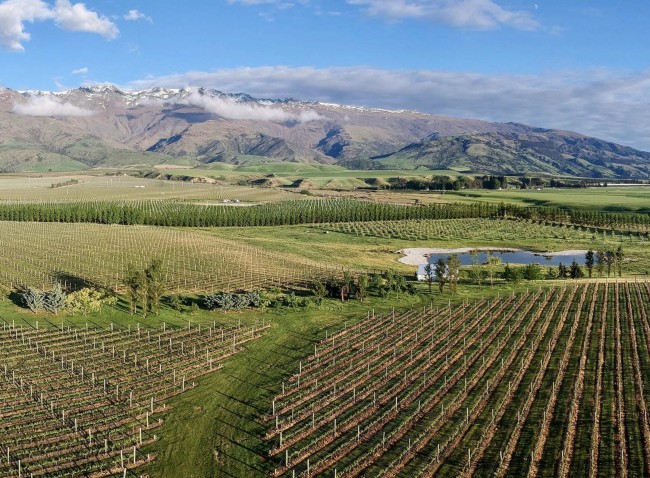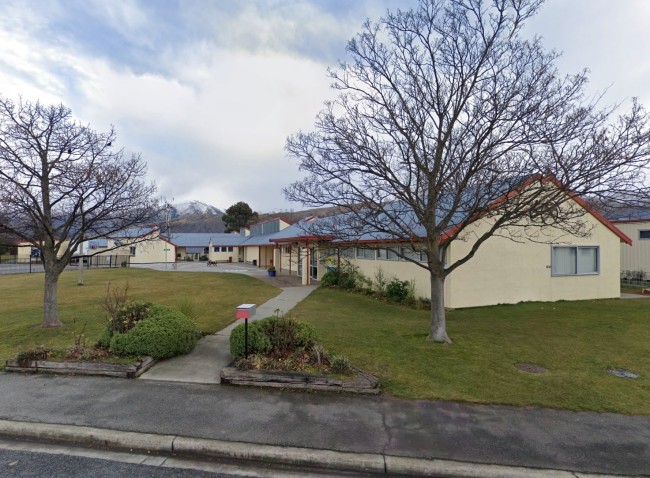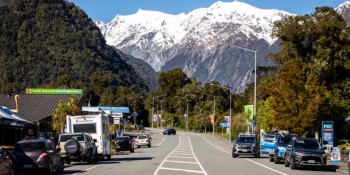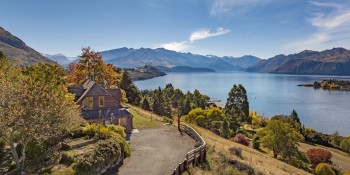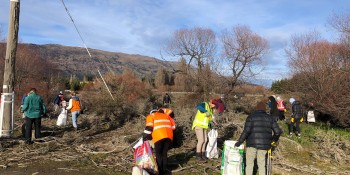
Gold mining company seeks to dredge the Clutha downstream of Wānaka
A commercial gold mining company has its eye on dredging the upper Clutha/Mata-au River downstream from Wānaka, but it says its planned operation will be so discreet most people will not know it is there.
Cold Gold Clutha Limited already runs its 24-metre dredge further on the river around the Millers Flat and Ettrick area, and it has done for the past decade.
Now, it is seeking resource consents to re-locate it upstream, between Luggate and the top of Lake Dunstan.
Mining consultant Darryl Sycamore, who is acting for Cold Gold in the application process, says the company’s ongoing operation has been very discrete and he does not think it will be any different at its proposed new spot.
“It (the dredge) is painted in recessive colours and has worked on the Clutha River for the last ten years with no public complaints or social media outrage.
“For a good portion of the proposed mining area, the riverbed is incised, set back from public space and in the rural environment, so there are few places where the dredge is actually visible.
“It is also a moving vessel, and whilst for some private property owners it may be visible it will move on over a couple of days.”
Getting go-ahead is not a straightforward process, and the company needs to work with multiple authorities to progress its plan.
Permission is needed to disturb the riverbed, take water and discharge sediment back into it, extract minerals and operate a commercial vessel on the waterway.
At the company’s request, its applications to the Otago Regional Council, the Central Otago District Council and the Queenstown Lakes District Council are publicly notified – allowing members of the public and other interested parties to have a say on the proposal.
Mr Sycamore says the consenting process is complicated, but that is not unusual.
“Consenting seems to be getting more complex each year, and councils are tending to adopt a more conservative approach to assessments.
“Councils now impose more on applicants to demonstrate the degree of effects and require multiple peer reviews from independent consultants, which absolves the councils of any decision-making responsibility.
“In terms of this application, it is certainly more complex having three councils involved.”
It is his view that council planners in general do not have a good grasp of the mining process, especially the suction dredge technique being used in the Clutha.
“There is a perception that mining results in significant environmental effects, which is simply incorrect. Mining is over less than 0.015 percent of New Zealand’s total land area and is heavily regulated, yet we have government policy enabling plantation forestry, which results in far greater effects over a far greater area.”

A gold mining company wanting to suck gold from the bed of the Clutha River between Luggate and the top of Lake Dunstan says mining is not a new activity in the area, as this photo taken several kilometres north of Cromwell in the 1890s, and included in its resource consent applications, shows.
The dredge itself is a steel pontoon catamaran, with a beam of 6.6 metres. The dredging power is hydraulic, powered by a 600-horse-power marine diesel engine.
Simply, a 35-centimetre pipe, controlled by an operator in the catamaran's wheelhouse, is used to suck up a slurry from the bottom of the river and discharge the gravels collected onto a classification screen. Oversize material and excess water go immediately back into the river; the rest is pumped through a gold recovery system, which does not rely on any chemical processes, before also being returned to the river, hopefully without any good finds.
Areas are "spot mined" - where a site is identified that is favourable for gold, and then worked - as opposed to blanket mining. As the dredge moves forward, any depressions are progressively reinstated by gravels returned to the watercourse.
The company says in any one year the area of mining "is not likely to exceed more than 10 hectares".
Propulsion is via twin 550-horse-power diesel engines driving water jets, but unless it is heading to refuel, retreat from bad weather or manoeuvre into a new dredging position, they're generally not in use.
Most of the time, the dredge will use two 500-kilogram mooring anchors to position itself in the river - these drop down directly in front of the vessel and the company says in its applications these will not impede other river users.
The size of the Clutha River and this bespoke anchoring system means there will be plenty of clear passage down at least one side, and normally two sides to allow others on the river to pass, it says.
"This is not a new activity to the area, and the Clutha has an enduring history of mining...The river was heavily modified in the past with little consideration for the receiving environment, and yet today the Clutha is regarded as one of New Zealand’s most scenic rivers."
Head here for details on how to make a submission on the company's application to the CODC, which closes on June, 23; here for details on how to make a submission on the company's application to the QLDC, which closes on June 26; and here for details on how to make a submission on the company's application to the ORC, which closes on June 23.
Main image (Cold Gold Clutha resource consent application): Cold Gold Clutha is seeking resource consents to operate a 24-metre-long suction dredge with a 6.6m beam along sections of the Clutha/Mata-au River between Luggate and the top of Lake Dunstan.













